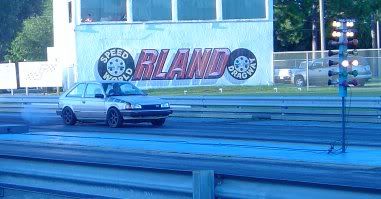It all depends on how much it's shaved by. Try the numbers yourself.
bore 3.346
stroke 3.268
head gasket thickness .040
deck height .030
piston volume 5cc
chamber volume 45cc
Those are approximations, but it works out. Now subtract how much you'd want to shave off the head from the deck height and/or head gasket thickness. You will come to the number you want, better than trying to figure out how much it'll change chamber volume from shaving. So if you do a .020" head shave, it'll raise compression from 8.8 to 9.2.....
In my case, my 11:1 pistons with an .020" head shave will raise compression to 11.89:1......
bore 3.346
stroke 3.268
head gasket thickness .040
deck height .030
piston volume 5cc
chamber volume 45cc
Those are approximations, but it works out. Now subtract how much you'd want to shave off the head from the deck height and/or head gasket thickness. You will come to the number you want, better than trying to figure out how much it'll change chamber volume from shaving. So if you do a .020" head shave, it'll raise compression from 8.8 to 9.2.....
In my case, my 11:1 pistons with an .020" head shave will raise compression to 11.89:1......



 ), shaping the combustion chamber and eliminating hot spots helps immensely to prevent pre-ignition. Of course pre-ignition at earlier intervals will be seen in turbo applications over NA because of the pressure in the cylinder befor the piston even begins to move back up to TDC. The more pressure, the greater chance of pre-ignition.
), shaping the combustion chamber and eliminating hot spots helps immensely to prevent pre-ignition. Of course pre-ignition at earlier intervals will be seen in turbo applications over NA because of the pressure in the cylinder befor the piston even begins to move back up to TDC. The more pressure, the greater chance of pre-ignition.


Comment